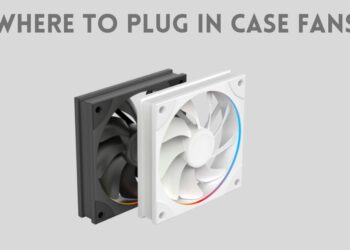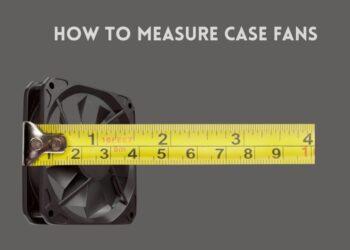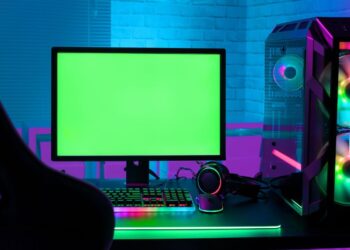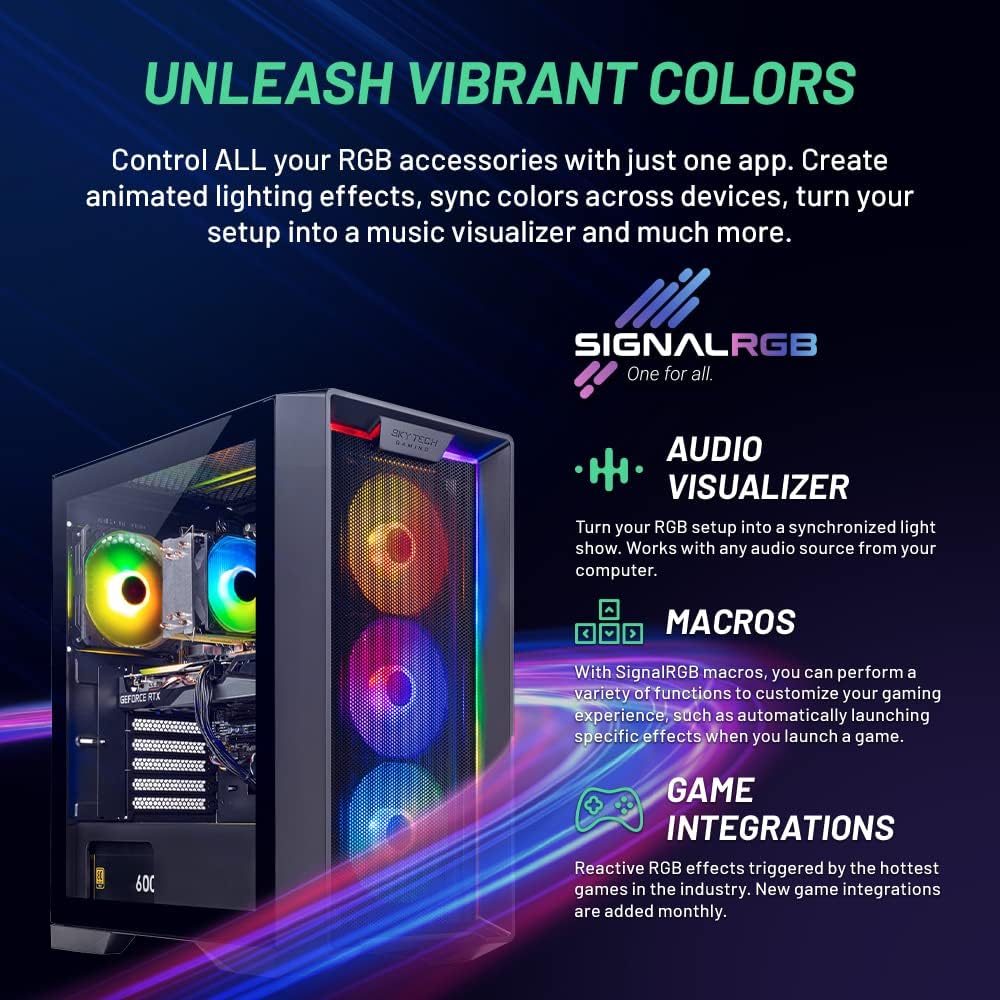The choice between a compact, versatile mini PC and a powerful, customizable desktop tower may seem straightforward on the surface.
But taking a deeper dive into their respective strengths and weaknesses for various applications reveals just how close the competition has become in recent years.
In this comprehensive Mini PC vs Desktop guide, we thoroughly compare mini PCs versus desktop PCs across six key categories to help identify the ideal machine for your needs.
Quick Overview: Mini PC vs Desktop
Before jumping into the details, here’s a high-level overview:
Mini PCs shine thanks to their:
- Extreme portability
- Energy efficient designs
- Affordable costs
- Flexible deployment options
However, desktops still reign supreme for:
- Raw processing power
- Customizability and upgradability
- Advanced cooling systems
Mini PCs work well for basic office productivity, home theaters, digital signage and more. But serious gamers and power users will want a desktop’s maximum performance.
Pick based on your budget plus current and future computing requirements.
Now let’s explore their differences and use cases further…
Defining Mini PCs vs Desktop PCs
We should first clearly explain what constitutes a mini PC versus a traditional desktop tower:
Mini PC Overview
A mini PC is a small form factor personal computer designed for portable computing in compact spaces. Mini PCs include tiny versions of essential desktop components like the:

- Processor – Typically a mobile or ULV (ultra low voltage) variant of popular chips from AMD, Intel and Qualcomm.
- RAM – Usually at least 4GB to 16GB of fast DDR4 memory modules.
- Storage – Both spinning hard disk drives (HDDs) or speedier solid state drives (SSDs).
- Graphics – Either integrated GPUs built into the processor die or separate entry-level discrete graphics units.
- Ports – A decent selection of connectivity ports like USB, HDMI and Ethernet.
They run common operating systems including various flavors of Windows and Linux. Some industrial mini PCs leverage Android for simplified interfaces.
By minimizing the motherboard size through careful layout efficiency and component choices, manufacturers fit full desktop functionality into compact chassis measuring fewer than 2 liters.
Mini PCs work well for general office productivity tasks, home theaters, digital displays and lightweight desktop virtualization. Their portable designs support placement anywhere space constraints exist.
Desktop PC Overview
Desktop PCs represent full-sized personal computers designed for fixed locations on top of or underneath office desks in homes and businesses. Their spacious cases house standardized components like:

- Processor – Desktop-focused chips from Intel and AMD packing multiple high-performance CPU cores running at blistering clock speeds.
- RAM – Up to 128GB of high-speed DDR4 memory (soon DDR5) to keep those CPU cores crunching data efficiently.
- Storage – Both HDDs and SDDs, sometimes in multi-drive RAID arrays for performance or redundancy.
- Graphics Card – Optional dedicated video cards from NVIDIA and AMD for accelerating graphical workloads. Otherwise most desktops rely on the capabilities of integrated GPUs built into processors.
- Ports – An abundance of USB, display and expansion ports for connecting various accessories and peripherals.
These traditional PCs run Windows, MacOS and Linux operating systems.
The copious interior space allows tower cases to cool heat-producing high wattage components using large fans and beefy heat sinks. They also permit extensive customization via swappable modules and add-in card expansions.
Desktops work best for intensive computing scenarios like high-end PC gaming, media production, data analysis and scientific applications. Their flexibility ensures long-term usefulness to meet future demands via component upgrades.
Now that we’ve clearly defined the key attributes of both mini and desktop PCs, let’s move onto their respective strengths and ideal use cases.
Key Mini PC Advantages
Mini PCs shine in four major areas compared to bulkier desktop counterparts:
Extreme Mobility

The diminutive form factor of mini PCs makes them incredibly portable and convenient to situate in the perfect spot. Models like the Intel NUC, Lenovo ThinkCentre Tiny and ASUS VivoPC measure fewer than 10 inches wide and under 2 liters in total volume. Even the heaviest rarely tip the scales past 5 pounds.
Packing up an entire productivity station becomes effortless when leveraging these tiny yet mighty machines.
Toss your preferred mini PC into any bag or small carrying case along with a compact keyboard, mouse and cables. Connect to any monitor using HDMI or DisplayPort and you’ve got an instant pop-up workstation.
Some niche mini PCs purpose-built for digital signage can even attach directly behind compatible displays using proprietary locking mechanisms.
Such effortless mobility helps explain the rising enterprise adoption of mini PCs for deploying temporary computer labs and exhibits at trade shows.
Hotels, classrooms and libraries similarly appreciate easily relocatable PCs requiring minimal space while meeting most computing demands.
Energy Efficiency Saves Power

Since compact mini PCs utilize lower power mobile or Ultrabook-class processors instead of high TDP (thermal design power) desktop chips, they consume significantly less electricity across both active usage and idle standby times.
For example, Intel’s 10th generation NUC mini PCs with Core i3 processors draw around 15 Watts under full load and fewer than 5 Watts while sitting idle on the Windows desktop. Compare that to equivalently performing desktop towers needing 60-65 Watts while gaming or running intensive applications. Those difference add up substantially over years of accumulated usage.
Mini PC buyers enjoy direct savings from lower energy costs. Going mini also keeps money in the pockets of businesses running large desktop fleets.
And reducing overall power usage benefits the environment thanks to fewer emissions given most electricity still comes from fossil fuels.
Its a win-win-win for home users, enterprises and Mother Earth alike!
Budget-Friendly Costs

Despite packing impressive performance into pint-sized enclosures, mini PCs deliver that speed at budget-friendly price points compared to traditional desktop PCs when you factor in all the mandatory accessories like keyboards, mice and monitors.
For roughly $300 to $400, you can purchase a very respectable mini PC like the ACEPC AK2 equipped with a quad core Celeron processor, 8GB DDR4 RAM and 128GB solid state storage. The Luna Technology NXP-C303 ups the ante to six physical Intel Core i5 cores while only adding about $100 to the cost.
To build an equivalently spec’s full ATX desktop tower with similar multi-core processing speeds, 16GB memory and 512GB NVMe storage requires around $800 or more.
You need to budget extra cash beyond that base cost for accessories like a display, keyboard, mouse and Windows license that come bundled with entry-level mini PCs.
While high-end custom desktop rigs still claim processing crown, mini PCs rule the value category.
Flexible Deployment Scenarios

The versatility afforded by ultra compact mini PCs enables tech savvy users to leverage them creatively across both home environments and commercial deployments.
For example, connect one behind the scenes to your living room television and home audio receivers to create an elegant 4K home theater setup. Control the user interface using wireless keyboards and mice to launch Netflix, Disney+ and Spotify apps with aplomb.
Software developers working from home may set up multiple mini PCs to simulate cluster computing configurations and distributed software testing environments without taking over entire rooms like racks of 19-inch servers would.
Schools frequently deploy carts filled with mini PC fleets for mobile computer lab exercises and electronic testing. Their durable designs withstand classroom abuse while delivering solid performance for education purposes.
Retail stores often utilize digital signage to advertise products and promotions across aisles and public areas feeding content from remotely managed central mini PCs.
Enterprise IT managers leverage advanced centralized configuration tools only available on properly equipped business-class mini PCs meeting their stringent hardware standards.
This flexibility and broad set of potential applications makes mini PCs one of the most versatile computing form factors around. They squeeze serious desktop-caliber performance into compact enclosures barely larger than some wall sockets!
Key Desktop PC Advantages
Desktop PCs still maintain compelling advantages justifying their larger size for more demanding users including:
Maximum Processing Power

When raw speed matters above all else, traditional desktop computers equipped with optimal high-end hardware still can’t be beaten – no way around that universal truth!
Their spacious cases accommodate top-tier processors from Intel and AMD packing up to 12, 16 or even 64 CPU cores running at blazing Turbo Boost speeds beyond 5 gigahertz.
Serious gamers need the best single threaded speed for driving high frame rates. Media creators rely on max rendering power for quick video production turnarounds. Scientists crunch datasets faster using massively parallel code spread across many cores simultaneously.
Further expansion room allows installing one or even multiple high-bandwidth PCIe gen 4 discrete gaming graphics cards for immersive 4K plus pixel pushing capacity. Additional memory channels hook up 1TB of cutting DDR4 RAM to feed those hungry GPU and CPU cores. Liquid cooling radiators dissipate heat when overclocking components for added frequency headroom.
For the ultimate in blistering compute speeds, custom configured desktop workstations take the performance cake – full stop.
Mobile-derived mini PC processors dial back cores counts, memory channels and sustained power limits to fit inside tighter thermal envelopes. They valiantly attempt keeping up using optimized laptop-grade parts but physics wins in the end.
Highly Customizable and Upgradable

If continually swapping out computer components over multiple generations thrills you, traditional desktops offer virtually unlimited hardware combinations thanks to their user-customizable modular designs.
Component selection starts before purchasing since DIY desktop builders choose each individual part like raw ingredients for cooking the ultimate performance recipe. Prosumer motherboards from ASUS, Gigabyte and MSI deliver loads of expansion capabilities through empty RAM sockets, vacant drive bays and vacant PCIe slots galore ready for future upgrades.
Swapping out the storage, graphics cards, cooling fans and even processors entirely poses no challenge down the road. Just unlatch the case side panel and start tweaking to balance performance against budgets. Inherently replaceable sockets for CPUs and removable PCIE slots for accessory cards facilitate generational upgrades following exponential Moore’s law these past decades.
Why purchase entirely new desktop systems when you could simply update a few modular innards?
Meanwhile mini PCs offer severely limited internal expansion potential once that initial purchase gets made. Soldered memory and storage prevents cheap RAM and SSD upgrades down the road. Discrete mobile GPU chipsets rarely upgrade over extended timeframes. The processor similarly gets permanently integrated into the confines of the tightly integrated motherboard.
If continually upgrading your computer hardware yourself sounds entertaining, only desktops properly fit the bill. Mini PCs instead live most happily within their small yet speedy original configurations.
Advanced Cooling Potential

Physics dictates that packing more powerful processors into tinier boxes inevitably concentrates waste heat densities that are harder to effectively dissipate using convection principles.
Since compact mini PCs can only harness dainty laptop-sized heatsinks and miniature cooling fans spinning much slower than tower variants, this thermal ceiling restricts their sustained performance ambitions.
Without the void spaces between components acting as buffer zones along with dedicated airflow channels found in desktop cases, interior hot zones frequently develop inside cramped mini PCs.
Central processing units (CPUs) and graphics processing units (GPUs) consequently enter safety mechanisms that down-throttle frequencies or deactivate entire cores to prevent overheating damage when workloads overwhelm their cooling capabilities over time. This throttled behavior manifests as periodic stuttering and sluggish responsiveness in demanding applications.
Meanwhile advanced desktops counteract extreme thermal output using a combination of huge heatsinks, high static pressure fans and liquid cooling radiators to maintain safe operating component junction temperatures despite continually rising TDP levels in modern PC hardware.
Top-tier processors now exceeding 150 watts absolutely need sophisticated cooling solutions only deliverable in spacious desktop tower layouts rather than the harsh confines facing fanless or compact mini PCs.
Comparing Typical Usage Scenarios
Now we’ve covered the key high level differences between compact mini PCs and full sized desktop towers. Let’s explore how they compare when tackling common personal and business computing workloads. Matching appropriately capable hardware tiers to intended applications prevents wasted expenditure just as much as configuring underpowered machines that ultimately prove frustrating!
Everyday Productivity

For performing basic office work, web browsing and home media streaming, even entry-level mini PCs pack enough punch to satisfy many undemanding users.
The previously mentioned ACEPC AK2 mini PC runs perfectly smooth for document editing, Zoom video calls, multiple browser tabs and basic photo management despite utilizing a lower power quad core Celeron chip and mere 4GB RAM. It only consumes around 10 watts flipping through Excel spreadsheets or binging Netflix shows.
You certainly could purchase or construct a higher performance desktop PC for mundane productivity tasks. But with base level configs already capable of 3 simultaneous 4K monitor support, spending extra on pricier processors and excessive RAM provides diminishing practical returns for email and web app usages.
Mini PCs spanning $200 to $500 sweet spots hit mainstream everyday computing needs on the head for most households and home offices.
4K Gaming & Media Creation

On the opposite spectrum, gamers desiring the ultimate immersive experiences at maximum 4K resolutions and buttery smooth high FPS frame rates understandably scoff at the very suggestion of utilizing compact mini PCs for such pixel pushing prowess.
Similarly, professional 3D modelers, video editors and data scientists leveraging workstation class hardware fully expect immediate and sustained results when tweaking filters in Adobe Premier Pro or kicking off multi-hour ray tracing renders or machine learning model training runs. Their billable time directly correlates with CPU cores and GPU memory sizes whirring as swiftly as possible!
These extreme usage scenarios naturally gravitate toward boutique custom gaming desktop configurations or branded mobile workstations packing the best silicon that Intel, AMD and NVIDIA muster these days.
We’re talking 12 to 64 core rendering beasts paired with RTX graphics cards starting at $1200 apiece for entry level 4K gaming ambitions and scaling exponentially for professional needs.
Of course less demanding users playing retro pixel art indie games or 720p Twitch streams may tolerate some compressed game settings on lower tier mini PCs without fully maxing every graphical checkbox to minimum FPS levels still above 60 FPS marks. But for uncompromising quality expectations, stick with proper desktops whenever possible.
Digital Signage

Public business frequently utilize digital signage screens across retail spaces, hospitality check-in desks and transportation hub arrival/departure boards to display helpful information.
More advanced installations also incorporate vivid graphical animations and embedded video clips for advertising products or conveying brand messaging too.
Powering these dynamic public facing displays poses unique device requirements compared to traditional stationary office work. A tailored operating system replaces complex UI layers with a streamlined interface that automatically boots available presentations and schedules content playback around the clock without user intervention. So specialized digital signage mini PCs purpose built for 24/7 operation work exceptionally for these usage scenarios.
Allied Control offers their Fanless Media Series specifically intended for powering digital signage installations across various environmental conditions. The ruggedized chassis withstands elevated temperatures while passive cooling maintains silent operation. Durable solid state storage reliably mounts available imagery slated for looping playback without skipping beats. Optimized embedded processors gracefully cycle through dynamic graphical content using efficient decode/encode media pipelines.
Though ordinary desktop towers could technically attempt powering public display signage, their louder active cooling fans and erratic OS updates may eventually cause issues. Sticking with hardened mini PCs designed for such roles from the onset simply makes more sense for this unique use case.
Signage reliability takes priority over peak processing metrics less critical for dynamic imagery shuffling.
Network Attached Storage

As our precious personal data repositories constantly balloon to terabyte dimensions thanks to expanding photo libraries and video archives, keeping everything securely backed up requires installing home data servers for mass storage needs.
These dedicated Network Attached Storage (NAS) devices connect directly to Wi-Fi networks while making disk contents remotely accessible to all household members and devices.
At first glance, picking up a basic 4 bay NAS chassis with some pre-installed hard disk drives may seem the most economical solution for establishing protected data repositories. But expandable mini PCs offer far more bang for the buck using similar hardware budgets.
For example, pairing something like ASRock’s DeskMini 310 barebones mini PC kit with a 2021 Intel Core i3 processor, 16GB RAM and a few high capacity Western Digital Red HDDs delivers vastly faster processing speeds for simultaneous file transfers and encryptions compared to anemic ARM chipsets inside consumer NAS boxes.
Increased multitasking flexibility comes thanks to full Windows or Linux OS support rather than proprietary embedded interfaces. You still get redundant storage federated into logical volumes all while leveraging familiar administered interfaces. For barely higher costs over diskless enclosures, mini PCs transform into versatile NAS appliances hitting well above their weight class!
Conclusion: Summarizing the Mini PC vs Desktop Debate
Deciding between compact mini PCs and full sized desktops depends greatly on properly weighing present and future computing requirements against balanced hardware specifications and budgets.
Respecting realistic workload needs rather than overspending on excess resources leads to smarter technology investments offering the most appropriate solutions.
Recommending Mini PCs When:
- High mobility and small footprints are mandatory.
- Peak CPU/GPU power limits stay low. (under 25W)
- General computing performance meets needs.
- Energy efficiency is important.
- Require niche OS like digital signage.
- Budget prices are appealing.
Recommending Desktops When:
- Processing power takes priority.
- Customizable and upgradeable.
- Advanced cooling is necessary.
- Gaming or professional graphics required.
- Long term hardware expandability desired.
- OS flexibility like Windows/Linux.
Of course hybrid solutions exist too for specialized use cases. Thunderbolt 3 external GPU enclosures add graphics muscle to premium mini PCs when gaming occasionally.
Small form factor liquid cooling kits tame thermals inside cramped cases during extended workloads. The technology dichotomy between both platforms continues narrowing overtime allowing more crossover potential.
Frequently Asked Questions
How much electricity does a PC use?
A PC can use between 60 to 200 watts, but a mini PC often uses less than 25 watts since they utilize low-power mobile processors rather than high-wattage desktop chips. This allows mini PCs to consume significantly less electricity than traditional desktop towers.
Can I use mini PC as server?
Yes, you can use a mini PC as a server since it functions as a standalone computer capable of file, print and media sharing functionalities on a network just like a regular-sized server. Its compact size, affordability and low power consumption makes a mini PC well-suited for use as a home, small office or edge server.
How many years does a mini PC last?
A mini PC can typically last over 5 years or more of usable lifespan for light to moderate workloads. Enterprise and industrial models may even operate reliably beyond 10 years if matched to unchanging application environments. Their lifespan comes down to aligning suitable and robust internal hardware tiers with intended usage patterns.
Do mini PCs have graphics card?
Most mini PCs rely on integrated graphics processing built into the central processor chip rather than dedicated discrete graphics cards due to size and thermal constraints. Some cube-sized mini PCs do support full-length PCIe video cards, and others can leverage external GPUs through Thunderbolt 3 for enhanced graphical capabilities.
Can mini PC connect to TV?
Yes, a mini PC can connect directly to TVs through HDMI or in some cases over Wi-Fi. This allows you to use a mini PC for entertainment purposes like streaming media, web videos or even light gaming using the TV as an external monitor.
Do mini PCs have HDMI?
The majority of mini PCs come equipped with HDMI ports to facilitate connections with monitors and TVs up to 4K resolution. More advanced mini PCs may also incorporate DisplayPort or USB Type C display connectivity for hooking up external screens.














